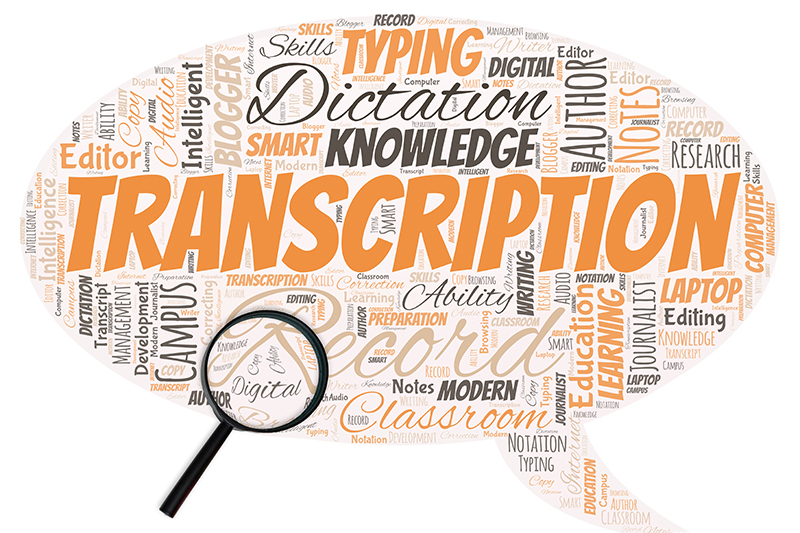
Digital technologies have become an integral part of the fast-paced legal world. Lawyers are wielding technology as their powerful ally to streamline their workflow and serve clients better. One legal area where technology is making a significant impact is deposition transcription. With the help of specialized software and cutting-edge tools, legal professionals can now transform spoken words instantly into accurate verbatim text. This not only saves valuable time but also ensures that no crucial details are missed or misinterpreted. Deposition transcription services provided by human transcriptionists complement machine-generated documentation, ensure accuracy, and address any challenging or sensitive content that may not be easily recognized by the software.
Technology for Accurate and Efficient Transcription
Efficiency and accuracy are critical when it comes to transcribing depositions. Legal professionals require comprehensive and accurate deposition transcription to build their cases, make informed decisions, and ensure justice is served. Time is often a critical factor in legal proceedings, and delays caused by inefficient audio-to-text conversion methods can have severe consequences. Leveraging technology can streamline the process, allowing for faster turnaround times and reducing the chances of errors. This saves valuable time for both legal professionals and court reporters and also ensures that the final transcripts are proper representations of the proceedings.
Cutting-edge Tools for Deposition Transcription
Legal professionals have access to a combination of technologies and tools to convert the formal, recorded account of a person’s testimony into text format:
- Digital recording equipment: Depositions are often recorded using digital audio recording equipment, which ensures high-quality audio capture and allows for easy storage and retrieval of the recorded files.
- Computer-aided transcription (CAT) software: Court reporters use this software to transcribe depositions in real-time. As the deposition is taking place, the court reporter uses a stenotype machine to capture shorthand notes, which are then translated by the CAT software into written text. These real-time transcripts can be displayed on a monitor for all participants to see. The software provides various features like audio playback, variable speed control, timestamps, and hotkeys. It can also automatically format the transcript according to court standards. With these useful tools and shortcuts, CAT software enhances the productivity of human transcription.
- Automatic speech recognition (ASR) software: ASR is an entirely automated technology that converts spoken language into written text without the need for human intervention. ASR software uses advanced algorithms and artificial intelligence to recognize and transcribe speech in real-time or from pre-recorded audio. This technology has advanced significantly in recent years and can now produce accurate transcripts in some cases. However, ASR still struggles when dealing with multiple speakers, background noise, technical jargon, accents, dialects, and nuanced language. The accuracy of ASR can vary depending on the quality of the audio and the complexity of the content.
- Human transcriptionists: Voice recognition software is useful, but may suffer from accuracy issues. Legal transcription services by human transcriptionists are essential to ensure accuracy and address any challenging or sensitive content that the software cannot recognize. These services can be especially helpful for attorneys who do not have their own court reporter or who need transcripts produced quickly.
- Online transcription services: There are numerous online transcription services that leverage both automated speech recognition and human transcriptionists. These platforms allow users to upload their audio files and receive accurate transcriptions in quick turnaround time.
- Editing and proofreading software: Legal transcripts serve as a precise account of spoken words, where court reporters meticulously document every detail uttered during legal proceedings. Deposition transcripts undergo rigorous proofreading to catch any dropped, swapped, or erroneous words, misspellings, inconsistent punctuation, and ensure optimal readability. Beyond merely proofreading the spoken word, a keen eye is kept out for any misplaced or inaccurate phrases. The ultimate aim is to craft a transcript that is both accurate and easily understandable, leaving no room for ambiguity or confusion. After a transcript is generated, using editing and proofreading software can help ensure accuracy and consistency. These programs can check for spelling and grammar errors, as well as inconsistencies in formatting or punctuation.
- Collaboration tools: Cloud-based transcription services provide accessibility and collaboration, allowing multiple parties involved in the deposition process to access and review transcripts remotely. Tools such as shared document editing software allow multiple parties to review and edit a deposition transcript simultaneously. This can help streamline the review process and ensure that all parties have access to the same information.
- Encryption and security measures: When it comes to encryption and security tools for legal transcription, there are various software and services available to safeguard sensitive information and prevent unauthorized access. The commonly used encryption and security tools for legal transcription include: end-to-end encryption software to ensure that data remains encrypted from the moment it is recorded until it is accessed by authorized personnel; secure file transfer services and protocols, such as SFTP (Secure File Transfer Protocol) or encrypted email services for safe transmission of transcription files between parties involved; encryption software for storage; Data Loss Prevention (DLP) tools to monitor and control data movements to prevent accidental or intentional data leaks; two-factor authentication (2FA) before accessing transcription files; secure cloud storage services, password managers; data encryption on mobile devices: Virtual Private Networks (VPNs), and document access controls within transcription platforms.
While software tools have improved significantly over the years, they may not be a one-size-fits-all solution for all deposition transcription needs. For example, they are usually not equipped to handle all audio types or challenging accents. Human intervention and editing are often necessary to ensure the highest level of accuracy, especially for critical and legally binding documents. Deposition transcription services provided by human transcriptionists continue to play a vital role in ensuring the accuracy, context, and confidentiality required for successful testimony transcription. A combination of both software tools and human expertise may be the best approach to achieve high-quality and reliable deposition transcripts.
Experience the power of accurate and precise deposition transcription!



